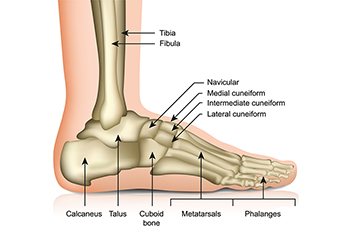
Some people consider the feet to be the workhorses of the body. They carry the weight of the body, provide balance and the ability to walk and run. Poor foot health can limit activity, and it may be difficult to complete daily activities. It is beneficial to keep the feet feeling as best as possible, and this can be done by practicing simple everyday foot care tips. It can start with washing and drying the feet thoroughly, followed by applying a good moisturizer on them. Regularly trimming the toenails can be done by using a stainless steel toenail clipper, and this may help to prevent an ingrown toenail from developing. When purchasing shoes, it is helpful to ensure there is adequate room for the toes to move in freely, in addition to being comfortable. Many foot conditions may be avoided when proper hygiene is practiced. If you would like additional information about everyday foot care tips, it is suggested that you consult a podiatrist who can provide you with the correct knowledge.
Everyday foot care is very important to prevent infection and other foot ailments. If you need your feet checked, contact one of our podiatrists from Advanced Foot & Ankle Medical Center . Our doctors can provide the care you need to keep you pain-free and on your feet.
Everyday Foot Care
Often, people take care of their bodies, face and hair more so than they do for their feet. But the feet are a very important aspect of our bodies, and one that we should pay more attention to. Without our feet, we would not be able to perform most daily tasks.
It is best to check your feet regularly to make sure there are no new bruises or cuts that you may not have noticed before. For dry feet, moisturizer can easily be a remedy and can be applied as often as necessary to the affected areas. Wearing shoes that fit well can also help you maintain good foot health, as well as making it easier to walk and do daily activities without the stress or pain of ill-fitting shoes, high heels, or even flip flops. Wearing clean socks with closed shoes is important to ensure that sweat and bacteria do not accumulate within the shoe. Clean socks help to prevent Athlete’s foot, fungi problems, bad odors, and can absorb sweat.
If you have any questions please feel free to contact our office located in Thousand Oaks, CA . We offer the newest diagnostic and treatment technologies for all your foot and ankle needs.




